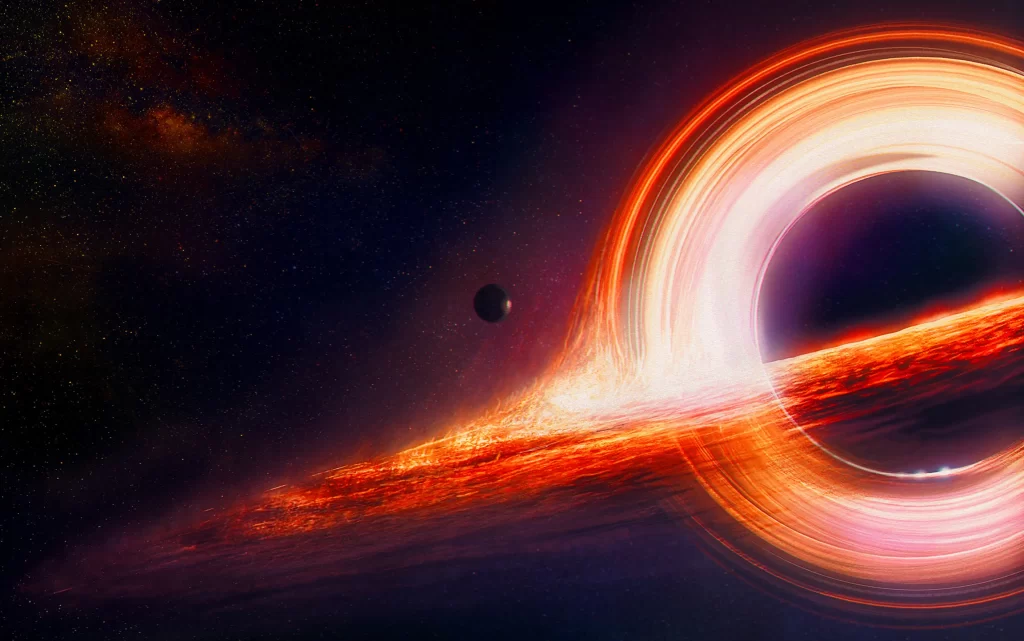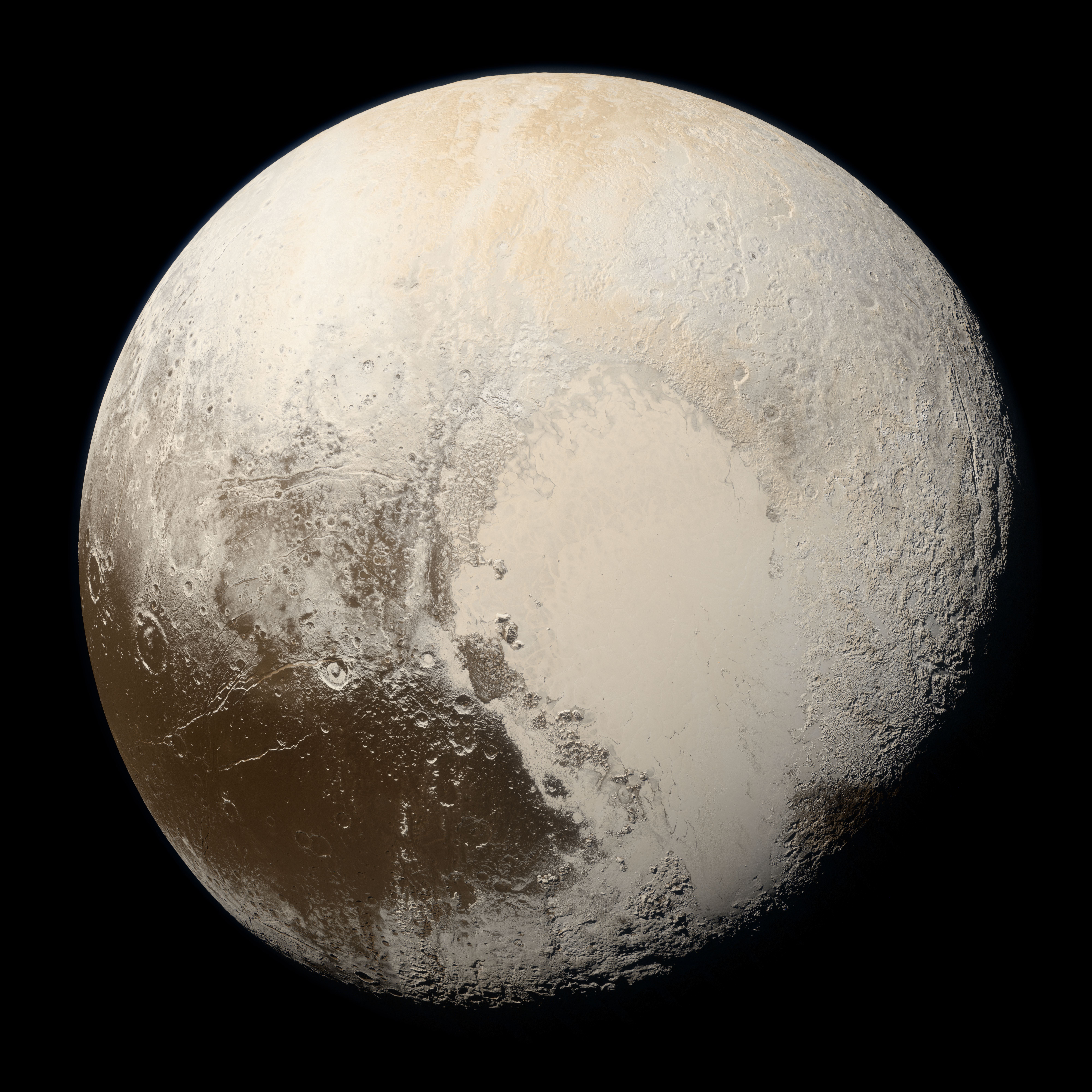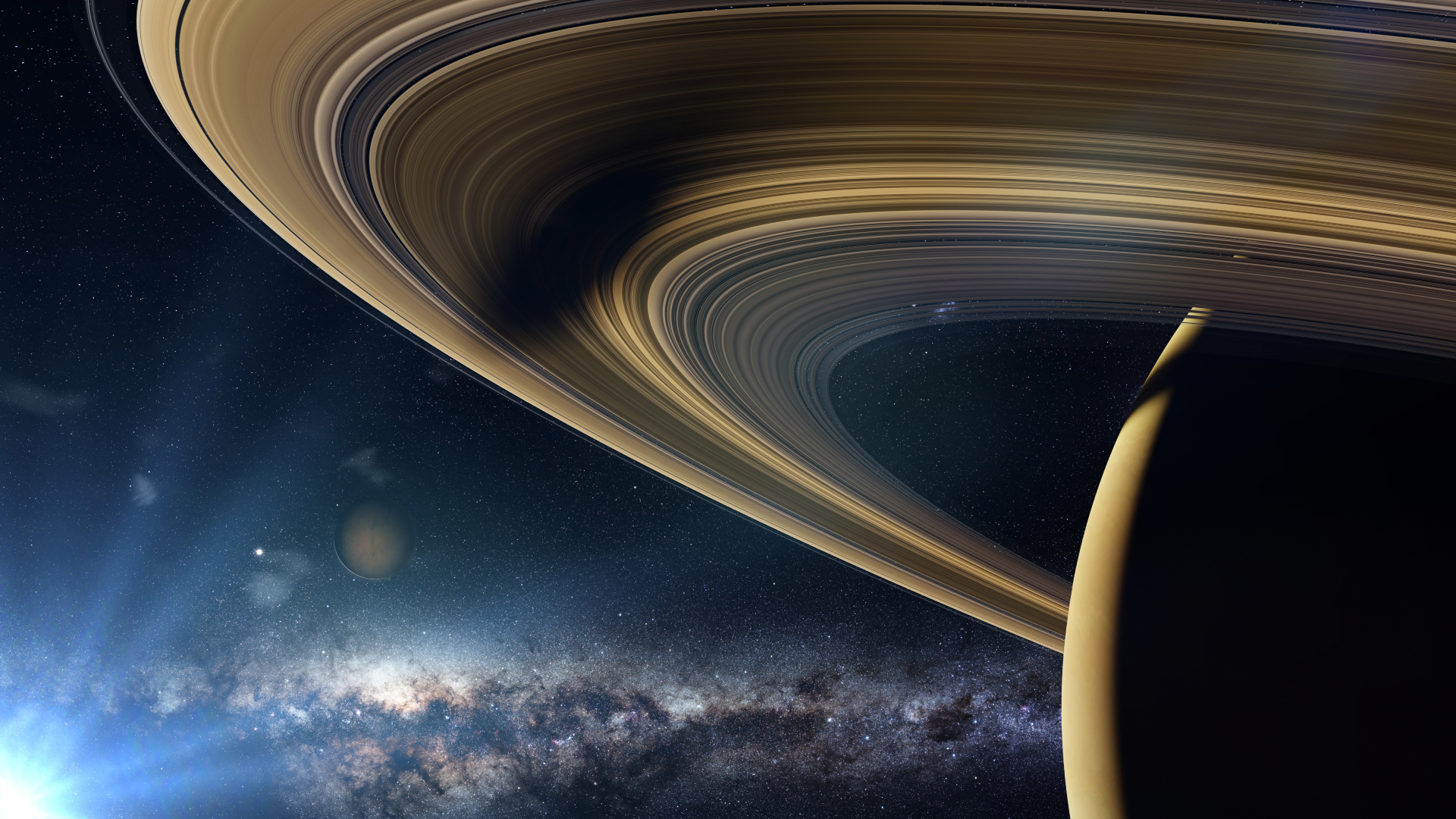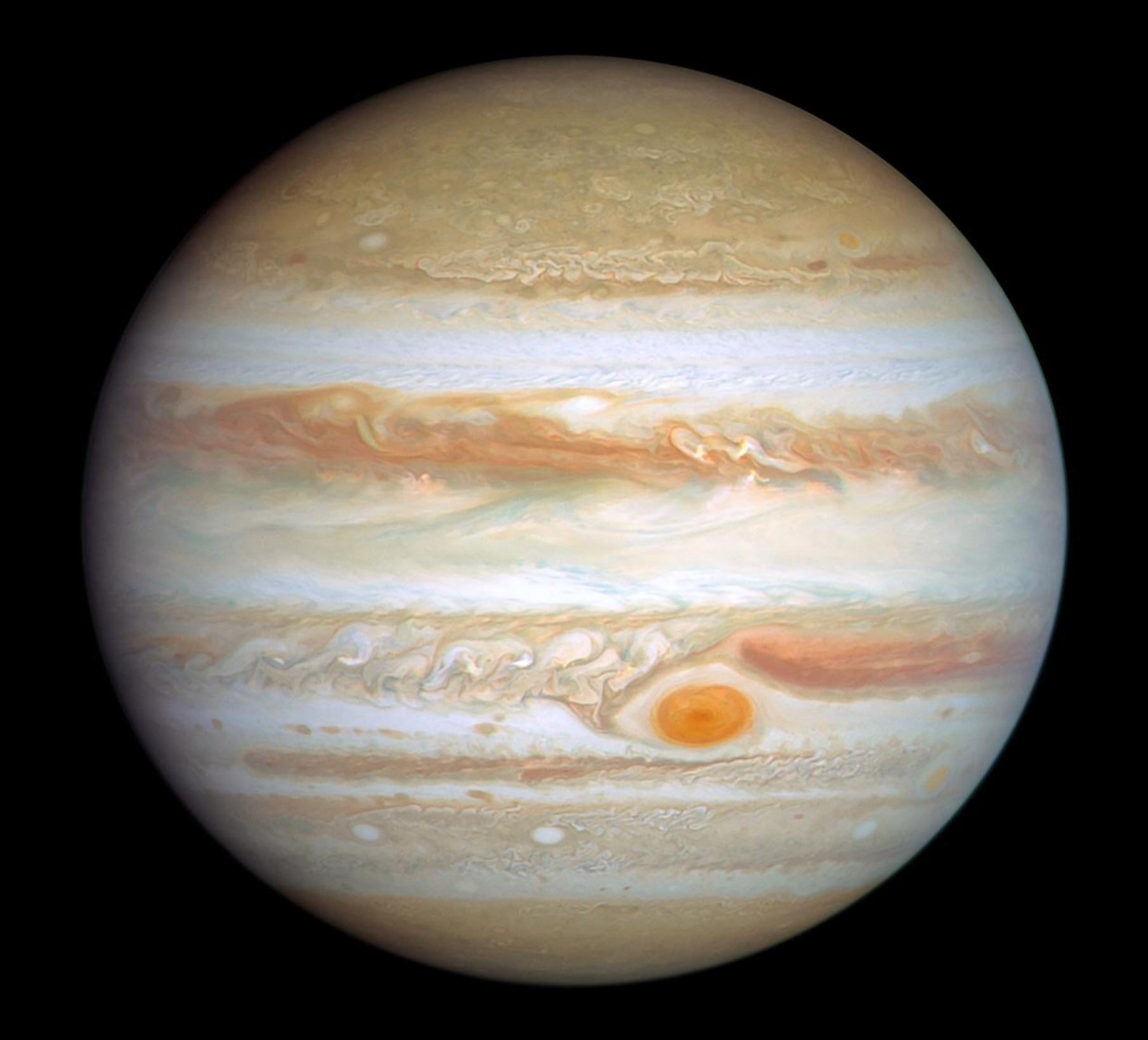Table of Contents
Ancient Views on Space and the Cosmic Structure
Early civilizations built complex models to explain the vast unknown beyond Earth. The Babylonians and Egyptians envisioned a structured cosmos, often depicting the sky as a dome resting above a layered world. In contrast, Greek thinkers like Democritus suggested that everything was composed of tiny, indivisible particles moving through empty space. This idea conflicted with Aristotle’s influential claim that aether, a mystical substance, permeated the heavens, ensuring a continuous, unbroken cosmos. These interpretations shaped early astronomy, but they never considered the possibility that existence itself could be enclosed within a black hole universe, a concept that would not emerge until modern scientific advancements reshaped our cosmic perspective.
Theories of space and matter evolved, yet the question of whether true emptiness existed remained unresolved for centuries. Aristotle’s rejection of the void dominated Western thought until the rise of experimental science. In the 17th century, thinkers like René Descartes expanded on Aristotle’s views, suggesting space was filled with invisible matter in constant motion. However, later physicists challenged these ideas, leading to modern theories about gravitational warping and space-time curvature. The notion that our observable universe might be an enclosed region, cut off from a larger reality beyond its boundaries, aligns with emerging ideas about a black hole universe, where space itself is shaped by extreme gravitational forces.
Early Discoveries in Extreme Gravity
The idea of an inescapable gravitational region emerged when Einstein’s General Theory of Relativity revolutionized physics in 1915. Karl Schwarzschild applied Einstein’s equations to describe a theoretical object so dense that nothing could escape its pull. This solution hinted at the existence of what would later be known as black holes, though many scientists initially dismissed them as purely mathematical curiosities. In the 1930s, Robert Oppenheimer proposed that massive stars collapsing under their own gravity could create these extreme objects. Around the same time, astronomers studying Saturn’s rings refined our understanding of orbital mechanics, which later helped model how matter behaves near these ultra-dense cosmic regions.
As scientific tools advanced, so did the study of gravitational singularities. John Wheeler popularized the term “black hole” in the 1960s, cementing its place in physics. Observations of distant celestial objects revealed intense gravitational fields, aligning with the predictions of Einstein’s equations. Meanwhile, quantum physics introduced new questions about how information behaves near these mysterious objects. By the late 20th century, some researchers speculated that our entire reality might be confined within a black hole, much like how particles remain trapped within the gravitational influence of Saturn. This radical perspective continues to challenge traditional views of the cosmos.
The Birth of Singularities and Event Horizons
When a massive star burns through its nuclear fuel, it no longer generates the outward pressure needed to counteract gravity. As a result, the core collapses, compressing matter to an extreme density. This process forms a singularity—a point where gravity becomes infinite—surrounded by an event horizon, the boundary beyond which nothing can escape. This phenomenon is key to understanding the life cycle of stars and the evolution of galaxies. Researchers studying gravitational effects on celestial bodies, including Saturn’s moons, have found similarities in how mass distorts spacetime, reinforcing models that explain how these collapsed regions shape the structure of the cosmos.
Some physicists theorize that our entire universe could exist inside a much larger event horizon, forming a cosmic boundary similar to what encloses a black hole. This idea suggests that the Big Bang may not have been the beginning of everything but rather the formation of a new, enclosed region within a higher-dimensional space. Just as a black hole’s event horizon prevents external observation of its interior, the observable universe may be confined in a way that hides the greater reality beyond it. Saturn’s gravitational dominance over its rings offers a small-scale analogy for how powerful forces can define cosmic boundaries.
A Universe Within a Gravitational Boundary
Nikodem Popławski’s 2010 hypothesis introduced a groundbreaking perspective on black holes, suggesting that they might act as cosmic gateways rather than just destructive voids. His work builds on the Einstein-Rosen bridge concept, proposing that black holes connect different regions of spacetime. If true, every black hole could serve as a portal to a newly formed universe, expanding within its own event horizon. This theory challenges traditional views of cosmic origins, raising the possibility that our own reality emerged from the collapse of a massive star in another universe. Observations of gravitational interactions, such as those affecting Saturn’s orbit, provide clues about how unseen forces influence cosmic structures.
If our universe exists inside a black hole, it would mean that we are permanently cut off from any external reality, much like how light cannot escape an event horizon. This perspective suggests that what we perceive as cosmic expansion could be the internal stretching of spacetime within our black hole universe. Some physicists speculate that this model could explain dark energy, the mysterious force accelerating universal expansion. Just as Saturn’s gravitational pull defines the motion of its rings, a black hole’s immense gravity could govern the behavior of an entire hidden cosmos, shaping the fundamental laws of physics within.
The Components of an Enclosed Cosmos
A black hole is structured into three distinct regions, each playing a crucial role in its physics. At its core lies the singularity, an infinitely dense point where gravity becomes overwhelming and known laws of physics break down. Surrounding it is the event horizon, a boundary beyond which nothing can escape. Outside this lies the ergosphere, where intense rotational forces twist spacetime itself. If our universe were within a black hole, the cosmic microwave background (CMB) could be the imprint of its event horizon, much like Saturn’s rings reflect the gravitational forces shaping them. This perspective suggests that our observable cosmos might be confined within an immense, unseen gravitational structure.
The continuous expansion of space further supports the idea that we exist inside a black hole universe. As matter falls into a black hole, it stretches due to extreme gravitational warping, mirroring the way our universe appears to expand at an accelerating rate. Some researchers propose that this process aligns with observed cosmic inflation, explaining why galaxies move apart while remaining bound within an overarching structure. If true, this would mean our reality is governed by forces beyond our reach, much like how Saturn’s moons orbit under the influence of an unseen gravitational center, bound by the fundamental laws of celestial mechanics.
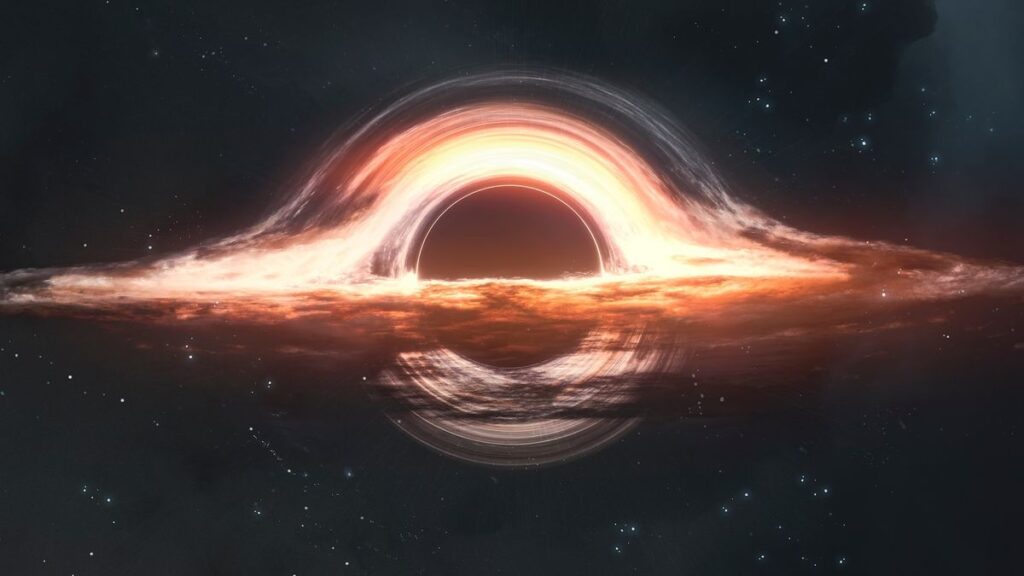
Cosmic Expansion and Gravitational Influence
The discovery of accelerating cosmic expansion in 1998 challenged previous models of a steady or slowing universe. Scientists attribute this acceleration to dark energy, a mysterious force that counteracts gravity. Interestingly, the way space expands within a black hole resembles this effect, suggesting that our universe could be behaving like an internal black hole system. Observations of galaxy distributions reveal patterns that align with gravitational warping seen in extreme astrophysical environments. Much like how Saturn’s gravity controls the structure of its rings without a visible boundary, our universe’s expansion could be governed by an unseen force, preventing us from detecting what, if anything, lies beyond.
The inability to observe an edge to the universe is another clue supporting the black hole universe hypothesis. In a traditional model, one might expect to detect a definitive boundary or center. Instead, space appears infinite from any point, just as an object crossing a black hole’s event horizon would perceive no immediate boundary. If we are within such a structure, our perspective is inherently limited, making external observation impossible. This could explain why galaxies appear to move apart endlessly while remaining confined within a larger, hidden framework dictated by gravitational forces beyond our reach.
A Hidden Reality Beyond Our Cosmic Boundary
If our universe exists within a black hole, the question of what lies beyond its event horizon becomes a profound mystery. Some physicists propose that a higher-dimensional space, potentially governed by different physical laws, surrounds us. This “parent” universe could be vastly different from our own, operating under unknown forces we may never detect. Just as Saturn’s gravitational field shapes the motion of its moons without them directly perceiving its full influence, our universe might be subtly controlled by external dynamics beyond our reach. This perspective suggests that the nature of space itself might be more intricate than current models predict, extending into dimensions we cannot access.
The possibility that black holes serve as cosmic gateways introduces a radical view of reality. If true, each black hole in our universe could be the birthpoint of a new, self-contained cosmos, much like our own. This would mean that the formation of black holes isn’t merely a destructive process but a fundamental mechanism of cosmic replication. While we remain trapped within our event horizon, other universes could exist beyond, forming an interconnected web of realities. Just as Saturn’s rings contain distinct structures shaped by unseen gravitational interactions, our cosmic environment may be part of a grander, unseen multiversal system.
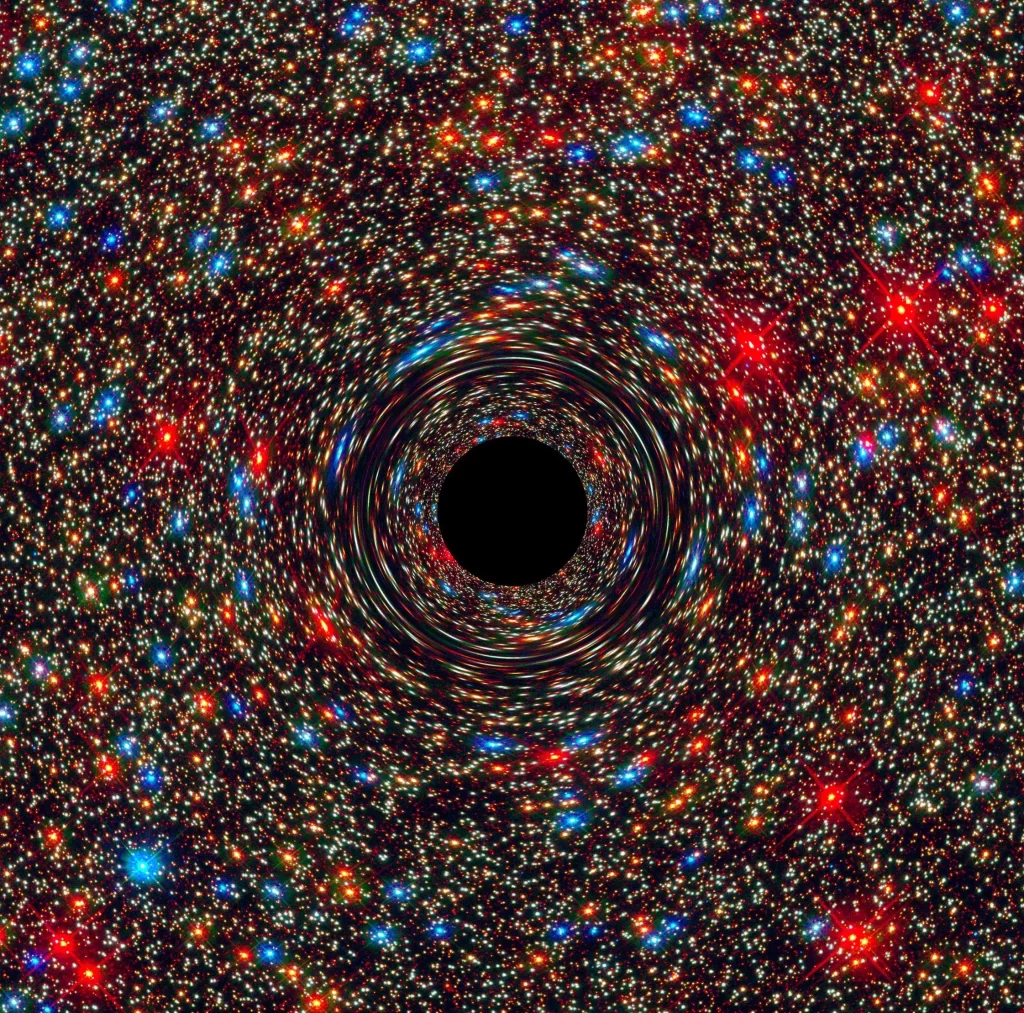
A Universe as a Projection of Information
The holographic principle proposes that the universe’s vast complexity might be encoded on a distant boundary rather than existing as a fully three-dimensional reality. Leonard Susskind’s work suggests that all matter, energy, and even consciousness could be projections from a two-dimensional surface. If our cosmos is contained within a black hole, then everything we perceive—space, time, and motion—could be an illusion generated by encoded data on its event horizon. Much like how Saturn’s rings appear as distinct structures yet remain shaped by underlying forces, our reality might be governed by information imprinted at the boundary of a larger, unseen system beyond our observational reach.
This perspective also provides insight into the black hole information paradox, which challenges whether information entering a black hole is lost forever. The paradox arises from conflicting theories: general relativity suggests information disappears, while quantum mechanics insists it must be conserved. The holographic principle resolves this by suggesting that information is never truly lost but instead encoded on the event horizon. If our universe is part of a black hole’s interior, then the vast web of galaxies, stars, and even our own existence may be reflections of data preserved in ways we have yet to fully understand, much like how Saturn’s gravitational field subtly influences objects within its reach.
Quantum Paradoxes and the Nature of Event Horizons
Quantum mechanics introduces significant challenges to the black hole universe theory, particularly through paradoxes that contradict classical physics. One of the most debated is the “firewall paradox,” which suggests that an intense layer of high-energy radiation exists at a black hole’s event horizon. If true, anything crossing the boundary—including light or matter—would be instantly incinerated. However, our universe does not exhibit such extreme energy conditions, raising doubts about whether we truly reside inside a black hole. Researchers studying gravitational interactions, such as those influencing Saturn’s orbital stability, have found no equivalent energetic barrier, suggesting that black holes may operate differently than conventional quantum models predict.
Recent advancements in quantum gravity propose alternative explanations that redefine the behavior of black holes. Theoretical models suggest that event horizons might be less destructive than previously thought, possibly allowing information and matter to pass through in unexpected ways. Some physicists argue that black holes could be linked by wormholes, tunnels in spacetime connecting distant points. Additionally, quantum entanglement—where particles remain connected despite vast distances—suggests that information might be preserved in ways we do not yet understand. If these theories hold, the idea of a black hole universe becomes more plausible, much like how Saturn’s rings maintain intricate structures despite the gravitational forces acting upon them.
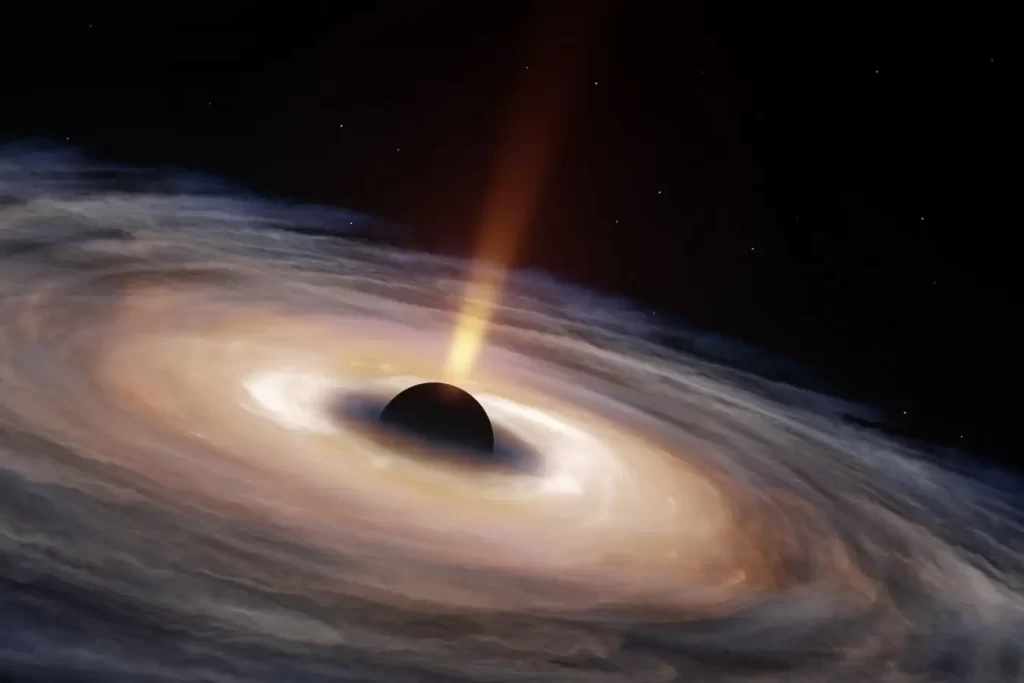
Theoretical Exits and the Limits of Observation
If our universe exists within a black hole, the question of escape becomes deeply speculative. Some physicists propose that every black hole has a counterpart known as a white hole, an object that expels matter and energy instead of consuming it. In this scenario, a white hole could exist on the other side of our universe, acting as a potential exit. However, no observational evidence supports the existence of white holes, and their theoretical properties contradict many known physical laws. Much like how Saturn’s gravitational influence holds its moons in stable orbits, a black hole’s immense gravity could ensure that anything inside remains trapped indefinitely.
Even if a white hole exists, the fundamental structure of spacetime might prevent access to it. The event horizon of a black hole is a one-way boundary, making movement beyond it impossible from within. Some quantum gravity models suggest that information can escape a black hole, but this does not necessarily mean that matter or observers could physically pass through to another realm. If our universe is part of such a structure, we may be permanently confined to its interior, with no means of perceiving or reaching whatever lies beyond, much like how Saturn’s rings remain bound within its gravitational field.
Rethinking Reality and the Limits of Perception
If our universe exists within a black hole, the nature of reality itself becomes uncertain. This perspective suggests that everything we perceive—matter, energy, and even time—could be confined within a larger, hidden structure. It raises profound questions: Is our existence merely a small part of an endless cosmic cycle? Could our fundamental laws of physics be dictated by forces beyond our reach? Much like how Saturn’s gravitational pull shapes the motion of its rings without them perceiving a greater structure, our understanding of the universe may be limited by the boundaries of our cosmic horizon, preventing us from ever grasping what truly lies beyond.
The idea of an inescapable universe forces us to reconsider human purpose and meaning. If we are trapped within an unseen gravitational system, is our reality predetermined, or do we have agency within its limits? Some theories suggest that knowledge itself has boundaries—no matter how advanced science becomes, certain truths may remain forever hidden. Just as Saturn’s moons remain locked in their orbits without experiencing the full extent of their planetary system, our perception may be restricted by an event horizon, making the ultimate nature of existence an eternal mystery beyond human comprehension.
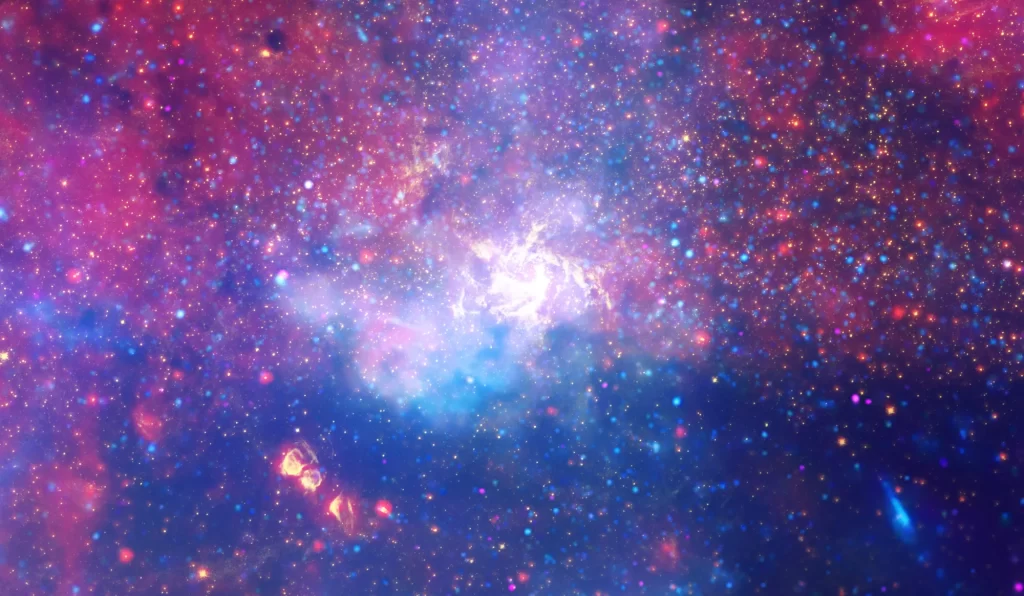
Advancements in Observing the Cosmic Structure
The next generation of space exploration and quantum physics research will play a crucial role in testing the black hole universe hypothesis. Scientists are developing advanced space telescopes capable of detecting gravitational waves and cosmic background radiation with greater precision. These observations could reveal patterns that align with black hole dynamics, strengthening the argument that our universe is enclosed within one. Black hole imaging, such as the Event Horizon Telescope’s capture of M87’s black hole, continues to push the boundaries of astrophysics. Just as Saturn’s rings were once a mystery until better telescopes provided clarity, deeper observations may uncover whether we exist inside an enormous cosmic event horizon.
Breakthroughs in quantum gravity could also provide answers about the fundamental nature of spacetime. Experiments at facilities like CERN aim to unify quantum mechanics and general relativity, possibly revealing whether black holes connect to other regions of space. If the black hole universe model is correct, it could revolutionize physics, forcing a shift in how we understand the cosmos. Whether this discovery would be comforting or unsettling depends on perspective. Are we safely contained in an ordered system, or are we trapped in a structure we can never escape? Science may one day provide an answer, but for now, the mystery endures.
How useful was this post?
Click on a star to rate it!
Average rating / 5. Vote count:
No votes so far! Be the first to rate this post.
Author
-

Meet Dr. Kendall Gregory, a highly accomplished professional with a remarkable academic background and a deep passion for empowering individuals through knowledge. Dr. Gregory’s educational journey began with a Bachelor of Science degree, followed by a Doctor of Chiropractic Medicine, focusing on diagnosing and treating musculoskeletal conditions. He further expanded his expertise with a Master's degree in Oriental Medicine, specializing in acupuncture and Chinese herbology, and a Master's degree in Health Care Administration, emphasizing his dedication to improving healthcare systems. Dr. Gregory combines his extensive knowledge and practical experience to provide comprehensive and integrative healthcare solutions. Through his writings, he aims to inspire individuals to take charge of their health and make informed decisions.
View all posts
